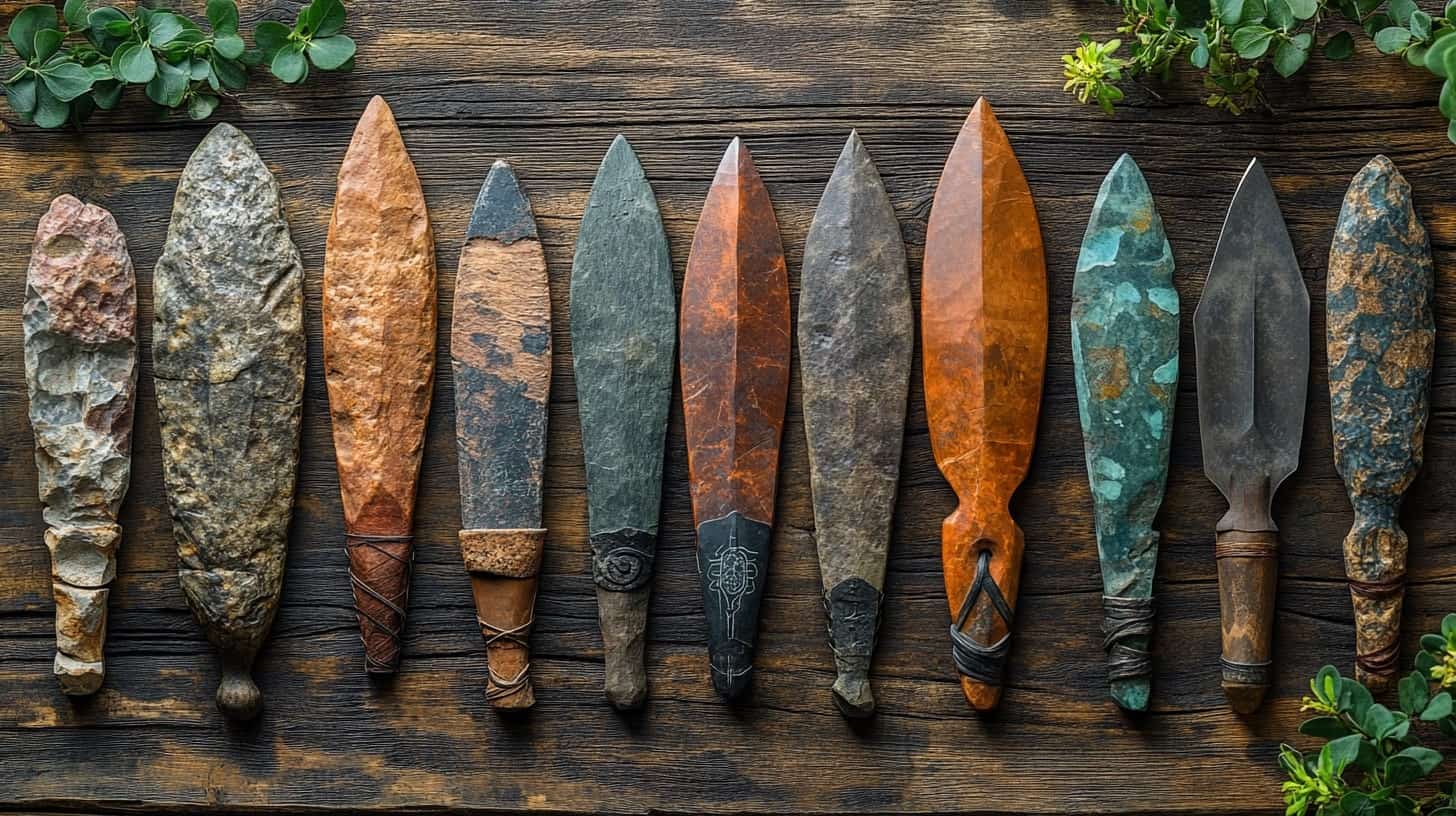For centuries, arrowheads have been an integral part of human history. These small, pointed tools have played a vital role in survival, hunting, warfare, and now, recreational sports. Their journey—from simple stone designs in the ancient world to precision-engineered components in modern archery—illustrates not only the progress of technology but also the enduring connection between humanity and the bow.
This article explores the evolution of arrowheads, shedding light on their historical significance and their transformation into the advanced designs used by today’s archers.
Ancient Beginnings: The Birth of the Arrowhead
The story of arrowheads begins tens of thousands of years ago, when early humans first fashioned tools for hunting and self-defense. Archaeological evidence suggests that the earliest arrowheads, dating back to the Stone Age, were simple flint or obsidian tips, chipped to a sharp edge. These primitive tools, often attached to wooden shafts with sinew or plant fiber, allowed hunters to effectively kill prey from a distance.
As societies advanced, so did the design of arrowheads. By the Neolithic period, people began shaping arrowheads with greater precision. Symmetrical designs emerged, improving aerodynamics and penetration. Flintknapping techniques became more refined, allowing artisans to craft lighter and sharper tips. These innovations not only enhanced hunting efficiency but also contributed to the rise of early civilizations.
Bronze Age Innovations: Metal Enters the Picture
The advent of metalworking during the Bronze Age marked a turning point in arrowhead development. Bronze, an alloy of copper and tin, was more durable and versatile than stone. This allowed for the creation of barbed and socketed arrowheads, which were deadlier in battle and more effective for hunting.
Socketed arrowheads, which could be inserted directly into a shaft, offered improved stability and ease of attachment compared to earlier designs. Barbed arrowheads, on the other hand, were designed to lodge into targets, making them difficult to remove. These advancements reflected the dual roles of arrowheads during this era: as tools for subsistence and as weapons of war.
Bronze Age arrowheads spread across Europe, Asia, and Africa, with regional variations reflecting the needs and resources of different cultures. For example, Egyptian arrowheads often featured a leaf-shaped design, while Chinese artifacts from the Shang Dynasty showcased finely crafted triangular tips.
Iron Age and Medieval Mastery: The Age of War
The Iron Age brought another leap forward in arrowhead development. Iron’s strength and abundance made it the material of choice for many ancient societies. Arrowheads during this period became more diverse, tailored to specific uses such as piercing armor or cutting through flesh.
The medieval period saw the rise of specialized arrowheads designed for warfare. Longbowmen, particularly in England, used bodkin points to pierce chainmail, while broadheads were favored for their devastating wounds. Armies across Europe and Asia relied heavily on archers armed with these advanced arrowheads, which became a cornerstone of military strategy.
By this time, the craftsmanship of arrowheads reached new heights. Blacksmiths produced finely honed points, balancing lethality with durability. Decorative designs also began to appear, with some arrowheads featuring intricate engravings or symbolic shapes.
The Transition to Modern Arrowheads
The decline of traditional archery as a primary tool for warfare coincided with the rise of firearms, but the art of the arrowhead did not disappear. Instead, it evolved to meet the needs of hunters, hobbyists, and competitive archers.
The Industrial Revolution brought significant advancements in material science, allowing arrowheads to be mass-produced from steel and other metals. Hunters continued to use broadheads, which now featured replaceable blades for added convenience and precision. Meanwhile, target archery saw the rise of field points, simple and streamlined arrowheads designed for maximum accuracy on the range.
During the 20th century, the sport of archery surged in popularity, driven by events like the Olympics and innovations in bow technology. As bows became more powerful, arrowheads needed to be lighter, stronger, and more aerodynamic. Manufacturers began experimenting with alloys, composites, and even plastic for specialized tips.
Modern Innovations: Arrowheads for Every Purpose
Today, arrowheads are highly specialized, designed to meet the diverse needs of archers. For hunting, broadheads remain the go-to choice, but their designs have become increasingly sophisticated. Fixed-blade broadheads offer reliability and durability, while mechanical broadheads feature deployable blades that expand upon impact, delivering greater cutting efficiency.
Sports archery, on the other hand, relies on field points and target points. These lightweight tips are engineered for consistent flight and easy removal from targets, making them ideal for competitions. Materials like carbon and titanium are now used to enhance performance, reflecting the cutting-edge nature of modern archery.
For historical reenactments and collectors, replica arrowheads remain a popular choice, offering a glimpse into the craftsmanship of the past. Many artisans still produce arrowheads using traditional methods, preserving ancient techniques for future generations.
A Timeless Tool with a Modern Twist
The evolution of arrowheads is a testament to humanity’s ingenuity and adaptability. From the humble flint tips of the Stone Age to the precision-engineered designs of today, arrowheads have played a crucial role in our history. Whether used for survival, warfare, or sport, they embody the spirit of innovation and the enduring appeal of the bow and arrow.
As technology continues to advance, the future of arrowheads promises even greater possibilities. Lightweight materials, aerodynamic designs, and smart technology could redefine what is possible in archery, ensuring that this ancient art continues to captivate and inspire.
